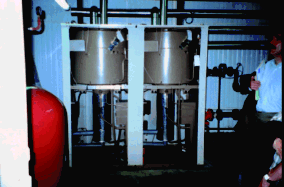 Air-conditioning is the dominating energy consuming service in buildings in many countries. And in many regions of the world the demand for cooling and dehumidification of indoor air is growing due to increasing comfort expectations and increasing cooling loads. Conventional cooling technologies exhibit several clear disadvantages:
Air-conditioning is the dominating energy consuming service in buildings in many countries. And in many regions of the world the demand for cooling and dehumidification of indoor air is growing due to increasing comfort expectations and increasing cooling loads. Conventional cooling technologies exhibit several clear disadvantages:
-
Their operation creates a high energy consumption.
-
They cause high electricity peak loads.
-
In general they employ refrigerants which have several negative environmental impacts.
 Task 25 'Solar Assisted Air Conditioning of Buildings' of the IEA Solar Heating & Cooling Programme addressed these problems. For this purpose the use of solar energy for air-conditioning of buildings has been covered by research, development and demonstration work. The main objective of the Task was to improve conditions for the market entry of solar assisted cooling systems.
Task 25 'Solar Assisted Air Conditioning of Buildings' of the IEA Solar Heating & Cooling Programme addressed these problems. For this purpose the use of solar energy for air-conditioning of buildings has been covered by research, development and demonstration work. The main objective of the Task was to improve conditions for the market entry of solar assisted cooling systems.
Technologies covered were:
-
Absorption chillers
-
Desiccant cooling techniques with solid desiccants, powered by solar collectors for air or water heating
-
New desiccant cooling cycles with liquid sorbents
-
Closed cycle solid sorption (mainly adsorption)
-
Advanced combined systems (e.g. solar dehumidification with conventional temperature control)
The results of task work are directed toward air-conditioning industries, planners, architects, facility managers and building owners.